
Northern Mountains Of India Map Calendrier 2021
The Nilgiri Mountains form part of the Western Ghats in northwestern Tamil Nadu, Southern Karnataka, and eastern Kerala in India.They are located at the trijunction of three states and connect the Western Ghats with the Eastern Ghats.At least 24 of the Nilgiri Mountains' peaks are above 2,000 metres (6,600 ft), the highest peak being Doddabetta, at 2,637 metres (8,652 ft).

Physical Northern Mountains Of India Map
2nd Mountains in India- Western Ghats Mountain Range. Introduction: The Western Ghats, also known as Sahyadri, is a mountain range located along the western coast of India, running parallel to the Arabian Sea.The range spans across several states including Maharashtra, Goa, Karnataka, Tamil Nadu, and Kerala, covering a total length of approximately 1,600 kilometers.

Mountains of India Infographics UPSC Exam Preparation Geography Infographic, Exam preparation
River Indus originates from the northern slopes of the Kailas range. The northern most range of the Trans-Himalayan Ranges in India is the Great Karakoram Range also known as the Krishnagiri range. Karakoram Range extends eastwards from the Pamir for about 800 km. It is a range with lofty peaks [elevation 5,500 m and above].
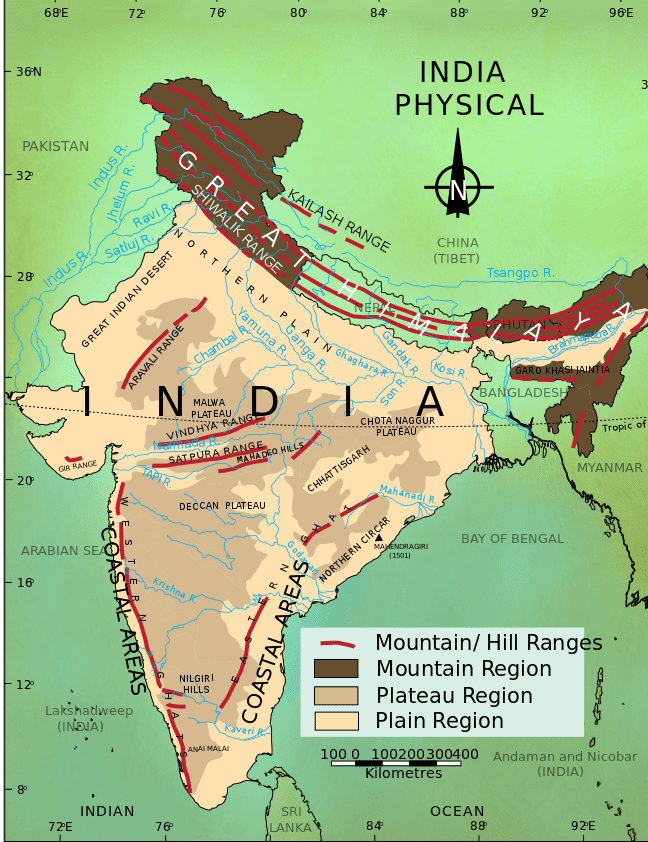
India Physical Map Himalayas Share Map
Highest Mountain Ranges in India 1. Kangchenjunga Peak India's highest mountain peak is called Kanchenjunga. The mountain is the third tallest in the globe. It is tall, rising to a height of 8,586 metres (28,169 ft). Kanchenjunga's name translates to "The Five Treasures of Snows" (namely gold, silver, gems, grain, and holy books).
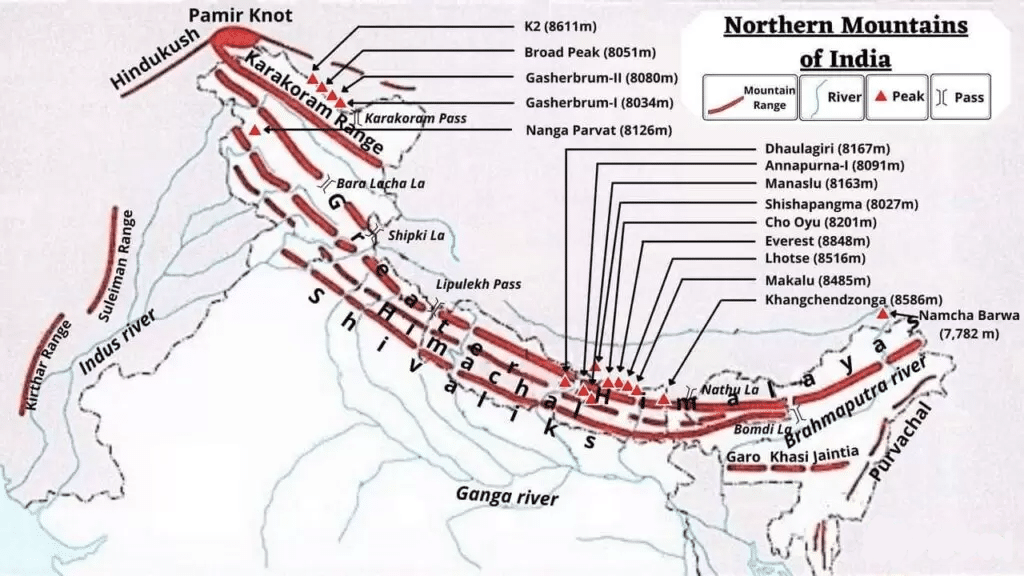
Important Mountain Peaks In India UPSC
The northern Indian subcontinent is surrounded by a great arc of mountains, consisting of the Himalayas, Hindu Kush and Patkai ranges. Mountains in these ranges include some of the world's tallest mountains and they also act as a natural barriers to cold polar winds and facilitate the monsoon winds, both having a significant impact on the climate of India.

The Northern Mountain Region Geography of India YouTube
Dhaula Dhar Range - It lies south of Pir Panjal range and is characterized by snow-tipped mountains forming Beas, Ravi Chenab and Tawi valleys. East Karakoram Range - Characterized by its vastness, it separates India with Central Asia and connects Leh, Yarkand and Kashgar. Here, the highest peaks are Rimo, Saltoro Kangri and Teram Kargari.

IndiaPhysiographyNorthern and Northeastern Mountains
15 Comments Mountain Ranges in North India - North to South Mountain Ranges in Central India - West to East Chota Nagpur Plateau - North to South Mountain Ranges in North East India Western Ghats Mountains - North to South Eastern Ghats Mountains - North to South Mountain Ranges in India (with few Details) CARDAMOM HILLS :
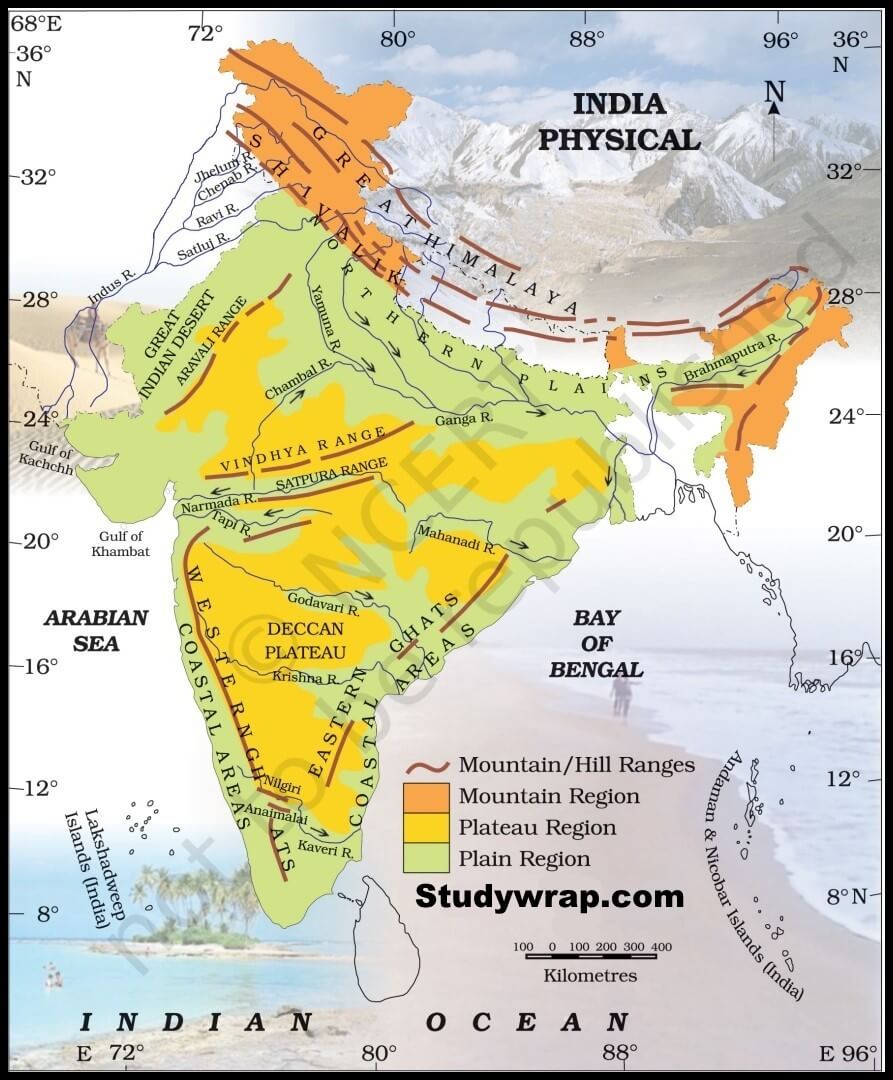
The Peninsular Plateau Hill Ranges & Significance Study Wrap
Maps of India - India's No. 1. Stretching for more than 2,500 km from the East to West, and 250 km to 400 km from South to North, the Himalayan Mountain Ranges are one of the natural wonders of.

Physical Map Of India With Hills United States Map
Lesser Himalayas of the Himalayan mountain ranges in North India are formed 2-5 million years back. The average height of these mountains range from 3700 m to 4500 m and their average width is 50 km. These mountains are covered with snow only during winter. In summer, they have cool and pleasant climate.

The mountain ranges of peninsular India Download Scientific Diagram
The 50 highest summits of India with at least 500 meters of topographic prominence River map of India West India Rivers Major River Basins in India East India Rivers North India.
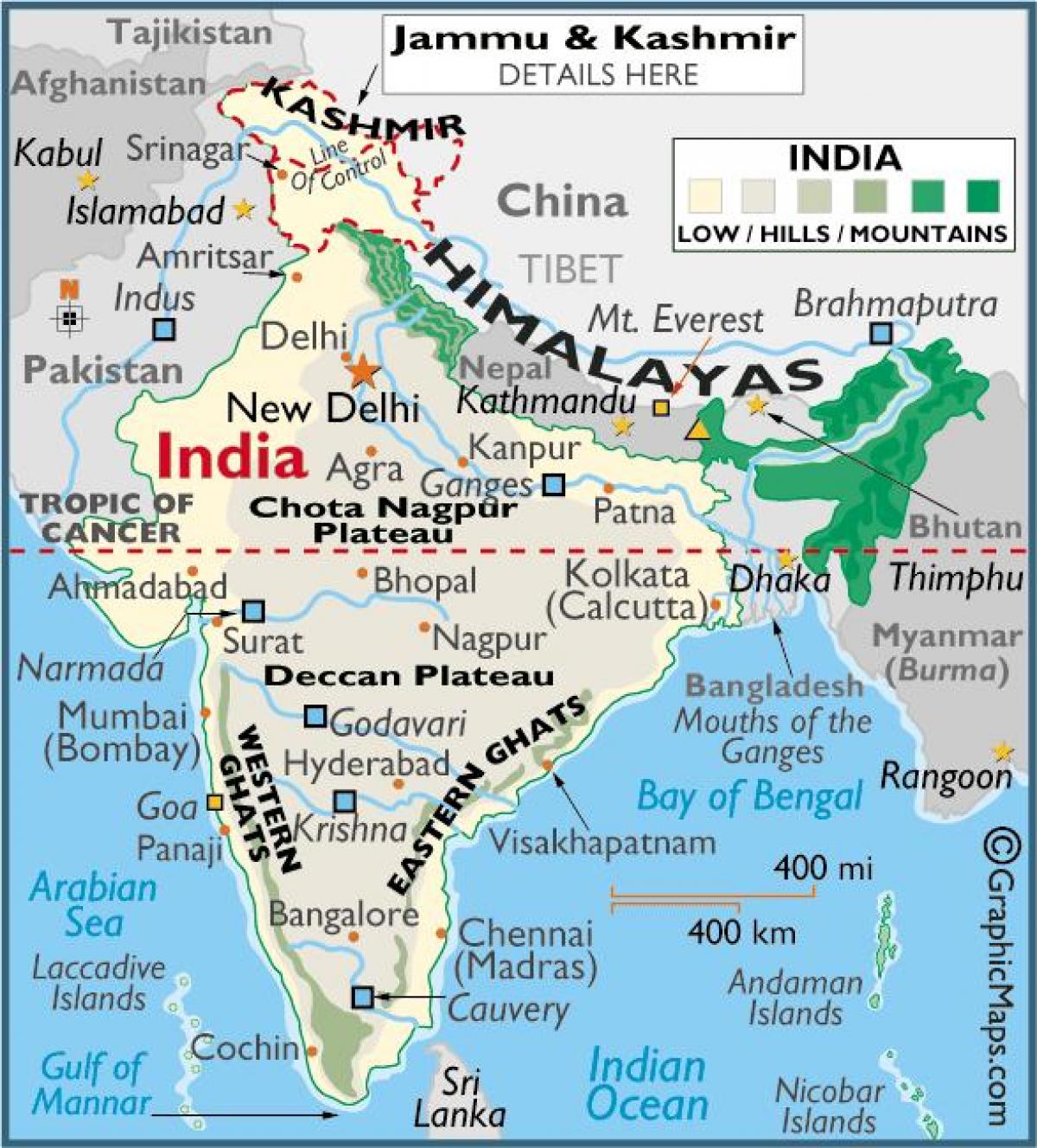
Mountains in India map Map of mountains in India (Southern Asia Asia)
The most dominant mountain ranges in the country are the Himalayan Mountain Ranges. The Northern side of the Indian Subcontinent is defined by the Himalaya Mountains, the Hindukush and the Patkai Ranges. Himalaya Mountains are the highest mountain range in Asia that separates India from the Tibetan plateau. It is known as the King of mountains.

Mountain Ranges In India Map Map Vector
The Great Mountains of the North: India comprises the Himalayas in the North and North-eastern region, separating the country from the Tibetan plateau. The Himalayan region consists of.

Mountain Ranges In India Map Osiris New Dawn Map
Northern Mountains - INSIGHTSIAS Home » Indian Geography » Physical Geography of India » Physiographic division of India » Northern Mountains Northern Mountains Origin Himalayas are the outcome of collision between Indian plate and Eurasian plate. During cretaceous period Indian peninsula broke away from Gondwana and started its northward journey.

Major Mountain Ranges in India
List of mountains in India - Wikipedia List of mountains in India Map all coordinates using: OpenStreetMap Highest major summits in India Other significant mountains Agastyamalai Anamudi Anginda Apharwat Peak Bamba Dhura Bandarpunch Betlingchhip Blue Mountain Brammah Burphu Dhura Chandrashila Changuch Chaudhara Chiring We Churdhar Deo Tibba Deomali
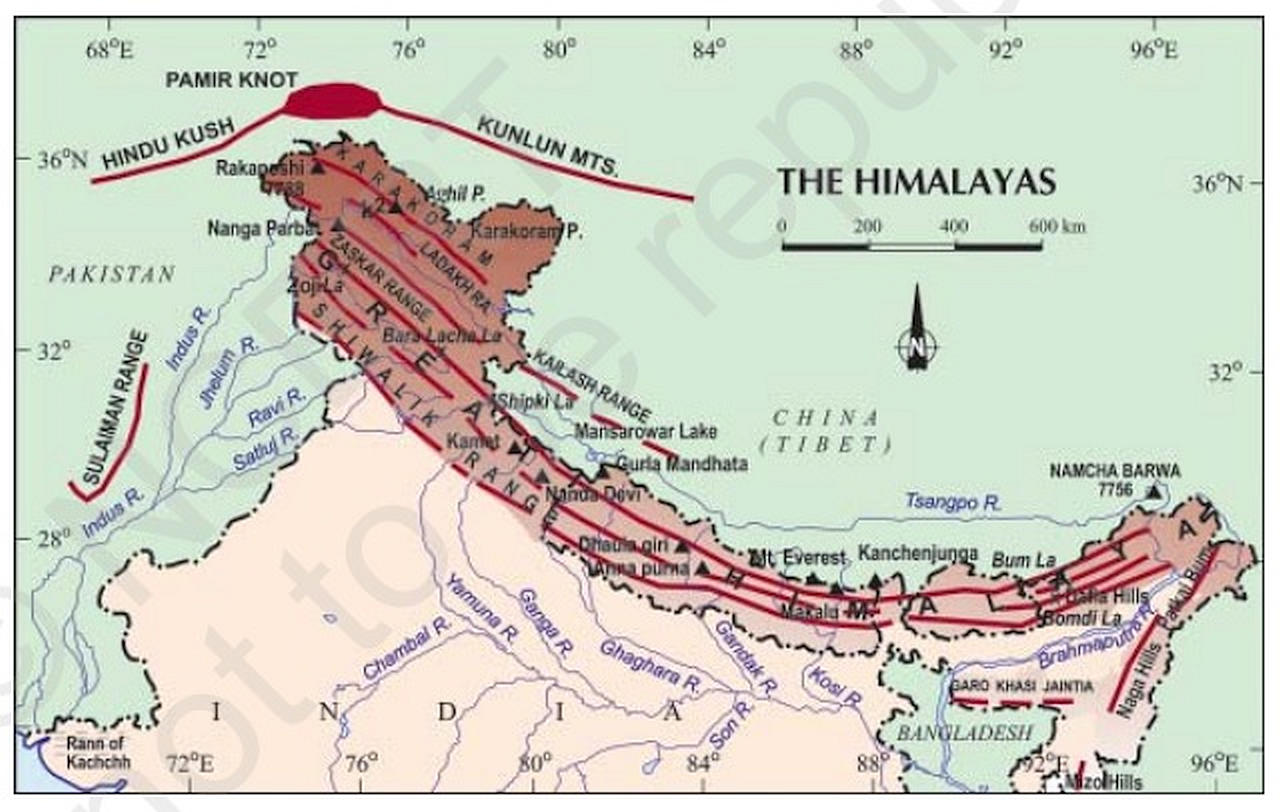
IndiaPhysiographyNorthern and Northeastern Mountains
It stretches for over 1,200 miles along India's northern border, all the way from Jammu and Kashmir in the West (where it's bounded by the Indus River) to Arunachal Pradesh in the East. The section in Sikkim has the loftiest peaks, with Mount Kanchenjunga being the third highest peak in the world at 28,169 feet above sea level.

The Himalayas subratachak
The Aravalli Range (also spelled Aravali) is a mountain range in Northern-Western India, running approximately 670 km (420 mi) in a south-west direction, starting near Delhi, passing through southern Haryana, Rajasthan, and ending in Ahmedabad Gujarat. The highest peak is Guru Shikhar on Mount Abu at 1,722 m (5,650 ft). The Aravalli Range is arguably the oldest geological feature on Earth.